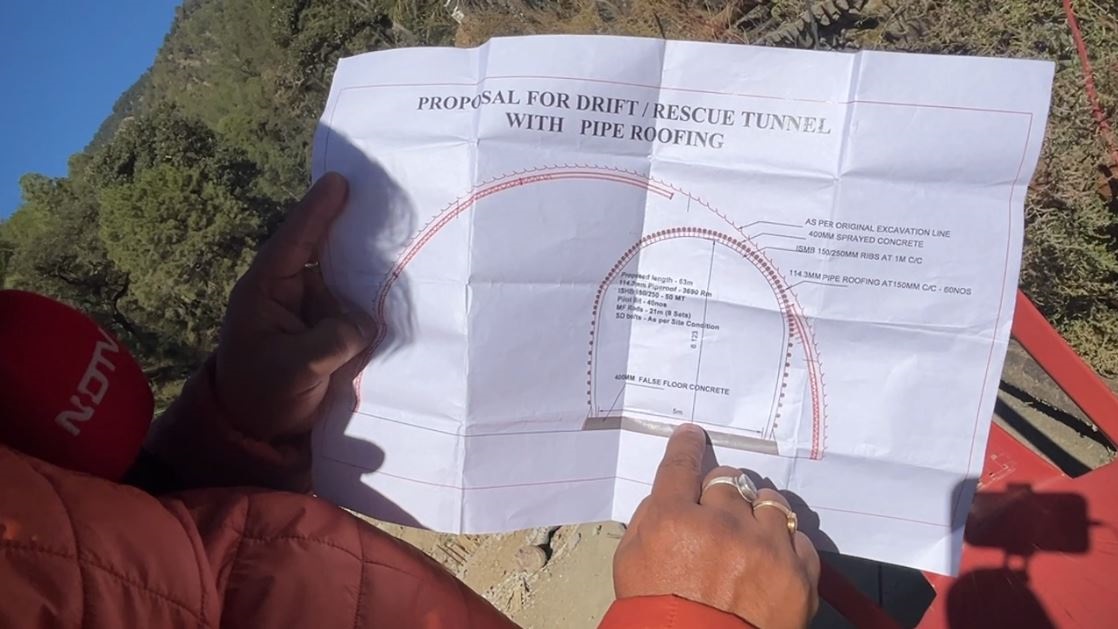
Some family members of the trapped workers said they are losing hope.
Dehradun:
Over 160 hours since 41 workers got trapped in a tunnel in Uttarakhand, a map has emerged that points to an alleged serious lapse on the part of the company involved in its construction. According to the Standard Operating Procedure, all tunnels over 3 km long are supposed to have an escape route to rescue people in case there is a calamity. The map proves that such an escape route was also planned for the 4.5 km Silkyara tunnel, but never executed.
The teams are now also coming up with alternative plans to rescue the workers, who have been stranded inside the tunnel since Sunday morning.
Family members of the 41 construction workers, most of whom are migrants, are now beginning to worry after the American auger, or drill machine, also stopped working last evening after a loud “cracking sound” was heard in the tunnel. Some of the family members and other workers involved in the construction said the labourers could have been saved by now if the escape route had been built.
Such escape routes are meant to be used even after tunnels are built to rescue people passing through them in vehicles if there is a collapse, landslide or any other disaster.
The map was displayed when Union Minister VK Singh had visited the site of the tunnel collapse on Thursday, and said that the workers would be rescued in two-three days. The minister of state for road transport and highways had said the rescue could be finished sooner, even as early as Friday, but the government was keeping a longer timeline in mind to account for unexpected difficulties.
Rescue Plans
Three ways of getting the labourers out have been tried so far and three more are now being worked out.
Plan A was to use a bulldozer to remove the debris and reach the labourers, but it was abandoned after the teams realised that the rock was loose and there was a chance of more rubble taking the place of the material that was removed.
Plan B was using an auger machine to push a 900 mm pipe through to the trapped labourers, which would be used by them to crawl out. The machine was not very powerful and proved ineffective.
Plan C involved getting a stronger, more powerful American auger machine, which was flown in on IAF aircraft. The machine began drilling through the rubble, which had increased to 70 metres from the initial 40, on Thursday but stopped work on Friday evening after the cracking sound was heard. Sources told NDTV that the machine has malfunctioned but officials have denied this.
Plan D has now reached the rescue site in the form of another horizontal drilling machine from Indore. It is hoped that this piece of equipment will be able to push the pipe through and finally reach the labourers.
Plans E and F are contingency plans in case Plan D fails. The first contingency plan is exploring whether a hole can be drilled vertically, from the top of the rock that the tunnel is passing through, and get the workers out that way.
The final plan, suggested by the railways, is digging a parallel tunnel horizontally, but from the other end of the rock. This tunnel would intersect with the main tunnel at the point where the workers are trapped.
Families Anxious
Some family members of the trapped workers said they are losing hope. The brother of one of the workers said they need to be rescued quickly before their health deteriorates.
Doctors have also emphasised the need for comprehensive rehabilitation for the trapped workers, fearing that the prolonged confinement may affect their physical and mental health.




